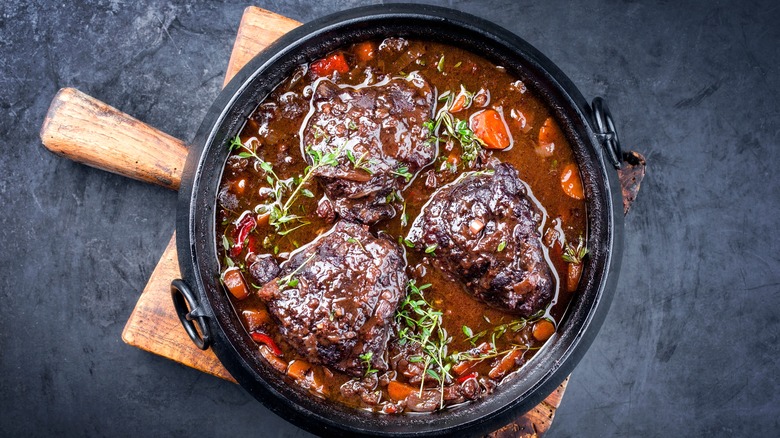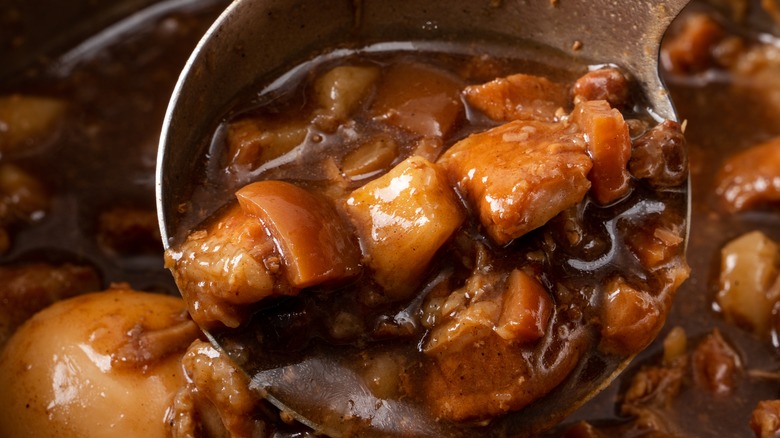The Secret Way Cheap Cuts Of Meat Baste Themselves While Braising
It's not actually a secret. Spoiler alert: it's the wonderful world of braising!
Braising is a technique that is hardly any labor on your behalf, but the end result is something truly special. A warm heat cooking method, often involving submerging a protein in a liquid of some sort and cooking it low and slow, braising is an important cooking technique necessary for tougher cuts of meat. It should be noted that anything can be braised, though, so it's not specifically restricted to animal products only: some vegetables are terrific when braised. As Cooks Info notes, Julia Child's seminal cookbook Mastering the Art of French Cooking even lists a recipe for braised lettuce!
Particular cuts that work well for braising are lamb shanks, short ribs, pork "butts" or shoulders, ribs, brisket, or even chicken thighs or legs. Braising is integral in dishes like pot roast, osso bucco, coq au vin, stew, or ropa vieja. Essentially, you can think of it as anything that can be thrown into a slow cooker or Crock Pot being braised. It's also a perfect cooking method for a cold winter's night and almost always a super-convenient one-pot meal.
Most braises also initially call for a round of searing, meaning cooking a product in a liberal amount of fat over a high temperature until it's sufficiently browned. This is essentially building flavor and texture on the tougher product before adding liquid, time, and heat in order to help the food item loosen up and become uber-tender.
What does braising mean?
As noted by Masterclass, "braising works beautifully on all cuts of meat, even lighter ones like chicken, but the cooking technique especially benefits the tough cuts, like beef brisket. Braising tenderizes meat, dissolving collagen and connective tissue into gelatin (which makes for a richer sauce or gravy later on) and coaxing flavor through every meat fiber until it's fork-tender." And that about sums it up! It's a great method to make even the cheapest meats taste amazing by basting themselves.
Most braises take at least two to three hours while others might even become an all-day adventure. The liquid used to braise is often stock, broth, or wine, but it can also be just plain ol' water. Many braises are done on the stovetop in a pot with a lid, or possibly even in an oven (also in a closed cooking vessel, either with a lid or a foil covering). Also, don't forget your vegetables and aromatics in order to help further flavor that cooking: Everything from celery and carrots to shallots and bay leaves. Some important final notes from Leite's Culinaria are to "use tight-fitting lids," "maintain a low heat," and choose "the right size pot."
Bonus? Once the braised item is sufficiently cooked, the leftover cooking liquid can (and should) be reduced over low heat and fortified with butter or even cream to produce a really terrific, incredibly rich pan sauce or gravy to pour all over your plate with reckless abandon.
Braising is nearly foolproof, and we couldn't recommend it enough.

